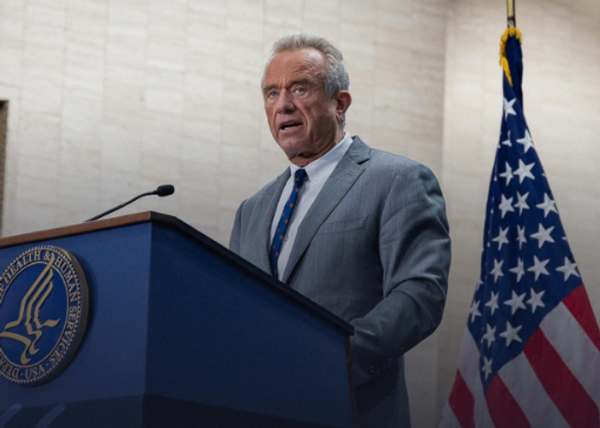SEOUL, South Korea — The repairing of ties between Japan and South Korea comes amid falling returns in trade from China and ramped-up U.S. efforts to corral its two allies deeper into a supply chain and security network amid rising geopolitical tensions.
China is the biggest export destination for both Japan and South Korea and has provided a major source of income for the region to ride out economic slumps for years.
Now as China ramps up its production capacity at home and moves up the value chain, Japan and South Korea are seeing trade with their giant neighbor growing less lucrative and more competitive overall. China’s economy last year grew at the second-slowest pace since the 1970s, which has also slowed business for many major players.
At the same time, the U.S. is seeking to bolster its economic ties while limiting the export of key technology to China.
Security is another factor likely feeding into the calculus behind the thawing relations. South Korea and Japan host the bulk of U.S. military personnel in the region, and the Biden administration has sought their help in building a united front to global threats.
North Korea continues to fire missiles as it hones its military capabilities and provides a regular reminder of the threat it poses. Meanwhile, China’s relations with the U.S. are deteriorating and Russia’s protracted war in Ukraine has changed perceptions about the likelihood of threats materializing.
“South Korea needs to go with Japan rather than China now as the two share the US as a security ally at a time economic and security interests are no longer separated,” said Lee Hong-Bae, a professor of international trade at Dong-eui University in Korea.
Japan has also seen its own business interests suffer from strained relations with South Korea and sees Seoul as a partner to better deal with security threats from North Korea to Russia, he added.
In a sign of the rapidly thawing bilateral relations since President Yoon Suk Yeol took office last year, he met Prime Minister Fumio Kishida on Thursday, for the first summit in Japan between leaders of the two countries since 2011.
Japan announced the same day it would lift export curbs on some technology-related materials to its neighbor that have been in place since 2019. For its part, South Korea said it would drop a complaint about the curbs lodged with the World Trade Organization. The announcements followed a deal earlier this month to resolve a contentious dispute over colonial-era labor that has plagued relations for years.
Japan’s export controls weighed not only on Korean companies from Samsung Electronics Co. to SK Hynix Inc. but also on Japanese businesses such as Shin-Etsu Chemical Co. and Tokyo Ohka Kogyo Co., hurting their competitiveness compared with firms in China.
The latest diplomatic breakthrough between Seoul and Tokyo will boost technological cooperation between the two as they brace for a global economic downturn amid elevated interest rates and geopolitical tensions.
It is also a welcome development for the US, which has been working to realign global supply chains that are less reliant on China.
The U.S. is offering more incentives for foreign companies building factories and increasing investment on its soil, with the Inflation Reduction Act among key examples. The Biden administration also plans to limit the activity of firms that benefit from its Chips and Science Act that provides incentives for the US semiconductor industry.
The deal between Yoon and Kishida won’t immediately transform supply chains built up over decades with China, but it suggests a shift in thinking over which relationships need to be prioritized.
China remains the No. 1 importer of South Korean products and Seoul is pinning hopes on a Chinese rebound from Covid lockdowns for its own economic recovery this year. South Korea’s economy last quarter contracted from the previous three months largely on a slump in exports to China, with chip demand particularly battered.
How much China’s reopening will actually help South Korea is a question, though. Bank of Korea Governor Rhee Chang-yong said last month that the country’s benefits from trade with China would not be the same if demand was centered on consumer goods rather than intermediate products.
China’s share in South Korean exports is also on the decline, with the two nations overlapping in more and more of the products they market to the world.
Beijing has been investing more in its ability to produce high-tech products from semiconductors to batteries at home. That is increasingly turning its trade relations with Japan and South Korea contentious rather than cooperative.
Areas of competition include electronics, health care and automobiles — which are among a handful of categories Yoon designated as core growth engines for his country’s economy when he announced a 550 trillion won ($422 billion) investment plan led by private sectors on Wednesday.
For Japan, the political rationale for rapprochement with South Korea is strong. American support is a crucial prop amid the challenges presented by China, North Korea and Russia. Washington has been seeking to re-unite Seoul and Tokyo via its three-way security front.
The deal between Yoon and Kishida doesn’t mean their nations have put an end to historical spats arising from Japan’s 1910-1945 colonial rule of the Korean Peninsula. But in a joint interview before departing for Tokyo, Yoon focused on mutual benefits.
“I believe we must end the vicious cycle of mutual hostility and work together to seek our two countries’ common interests,” he said.







